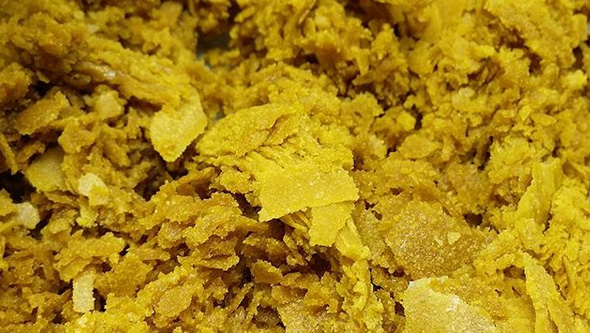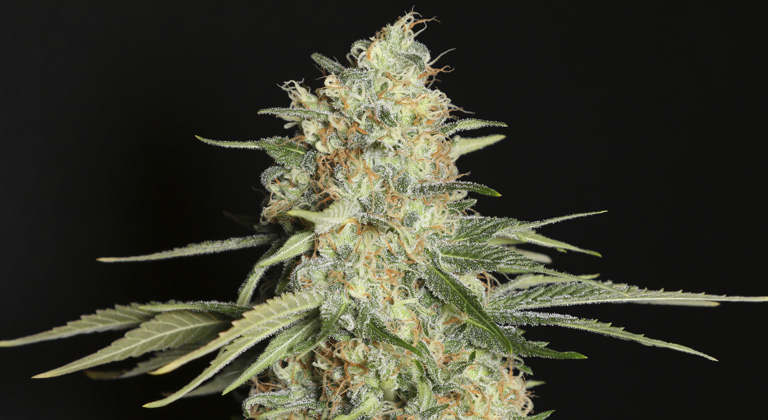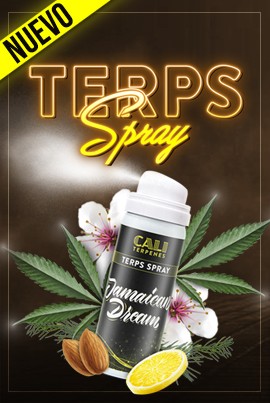Cannabis Glossary
Here you can find all terms regarding cannabis organized alphabetically.
A
Aeroponics: growing system in which the roots are held in a dark container suspended in the air, and nutrient solution is sprayed. This makes for oxygenated roots and better root growth, which means better overall yield.
Afghan, afghani, afghana: cannabis strains from the Hindu Kush region, these strains are used in many hybridizations of modern and classic strains. A few examples of afghan strains are TNT Kush, Pakistan Chitral Kush and SAD.
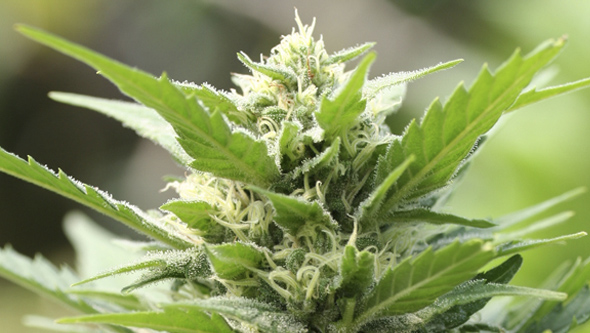
Alkaline: when talking about a solution, alkaline means that it has a pH superior to 7.
Apex: this is the top of something; in regards to cannabis, it’s the top part of as bud, the tallest part of the plant.
Autoflowering cannabis: cannabis plants that start flowering from the 3 – 4th growth week onwards due to their genes, which usually contain Ruderalis. They tend to produce less THC than photoperiodic strains but they’re ideal for fast indoor grows while photoperiodic plants are still growing. We stock a wide range of autoflowering seeds in our store.
Auxins: these are natural or synthetic plant hormones that cause plant growth via cellular elongation. Delta 9 and Hemplex are two stimulants rich in auxins.
B
Ballast: these are transformers designed to keep the electrical current going to your light stable, limiting intensity. They’re needed for HPS or MH grow lights. La Huerta Grow Shop stocks a wide range of ballasts.
Base fertilizer: these are fertilizers designed to cover the basic needs of cannabis plants during certain phases. For example, Canna Bio Vega is designed for the growth stage for cannabis plants.
BHO (butane Hash/Honey Oil): this is a type of concentrate extracted from cannabis that’s high in cannabinoids. Refined gas is used as a solvent during the extraction process, which is later extracted using a vacuum oven or a vacuum chamber which are connected to a pump. It can be classified depending on certain temperatures.
Bio-mineral fertilizer: these fertilizers are a combination between organic bases and mineral nutrients. Bio-mineral nutrients are easily absorbed, and they produce great results, just take care with how often you feed your plants and how much. The Sensi Grow A and B range by Advanced Nutrients is a bio-mineral range.
Bloom lighting: when growing photoperiodic cannabis plants, you’ll need to give them 12h of light and 12h of darkness when growing indoors in order to flower them.
Blunt: these are essentially rolled up cannabis cigarettes using hemp papers or cigarette papers. Some blunt papers also come with aromas in order to produce extra flavours or aromas.
Botrytis: also known as grey mould or Sclerotinia Fuckeliana, this illness is caused by botrytis cinerea fungi that is capable of easily attacking cannabis flowers.
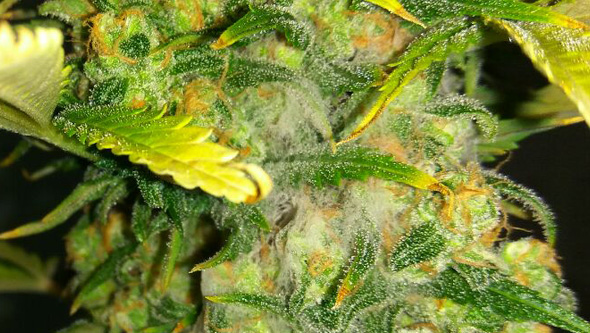
Breeder: cannabis experts that breed new strains either on their own or for a seed bank.
Buds: female flowers that grow on cannabis plants by combining calyxes. Buds can vary in size, appearance, aroma and flavour depending on the strain and type of grow.
C
Calyx: the calyx is the “pod” that covers the flowers, from which little “hairs” grow. A group of calyxes together is what forms a cannabis plant. Calyxes are in charge of protecting female flowers and seeds if they’re pollinated. The leaf/calyx ratio is the number of calyxes proportionate to leaves; the more calyxes than leaves, the easier it is to trim.
Cannabinoids: this organic element is found in cannabis plants (THC, CBD, CBG… ) and they alter the cannabinoid receptors in the human body. They can be classified into phyto-cannabinoids which are those produced by cannabis plants, and endogenous cannabinoids which are produced by animals or the human body such as anandamide, or even synthetic, artificially created cannabinoids.
Cannabis: this is the scientific name (Cannabis Sativa) of the plant, regardless of if it’s industrial hemp or psychoactive cannabis. This is a herbaceous species of the cannabacea family.
Cannabis club: non-profit associations designed to distribute cannabis to their over-age members and cannabis consumers.
CBD: (cannabidiol) this is a cannabinoid that’s present in the resin from your cannabis plants. It’s not psychoactive on its own but it can moderate THC’s psychoactivity, and it has plenty of therapeutic uses for various different issues such as anxiety, nausea, convulsions, epilepsy etc. In our canna-pharmacy section you can find CBD in different formats; drops, sprays, crystals, hash, oil…
CBG: (cannabigerol) this is a non-psychoactive cannabinoid found in cannabis plants and mostly in hemp plants. CBG has plenty of medicinal properties, including alleviating eye pressure (which can alleviate glaucoma), as well as acting on the human body’s cannabinoid receptors.
City growing: over the last few years many more people have gotten into city growing. It involves setting up a small grow on your balcony or terrace in which you can grow your own organic garden including fruit and veg! In our store you can find everything you need to set up your little city farm, and of course everything you need to grow cannabis both indoors and outdoors.
Clones: also known as cuttings, these are small parts of the plant that you cut off and plant in order to obtain another that’s genetically identical to the original. At La Huerta Grow Shop you can find a wide range of products designed for making your own clones, from pots and rooting cubes, to rooting hormones such as Bioclone and root stimulants in order to guarantee decent rooting after propagating.
Coco coir: this is an inert substrate of organic origins that’s extracted from coconuts. It comes in a fibre and powder format and it’s perfect for mixing with soil in order to improve it or as using as an inert substrate thanks to how airy and open it is, increasing fast growth. La Huerta Grow Shop stocks coco coir in various different formats; coco coir in slabs, bags and bricks.
Colloid: substance that is slowly dispersed in a liquid.
Compost: organic decomposed material that is used as fertilizer or added to the substrate. You need to choose your composting material wisely, using organic materials and respecting fermentation periods in order to create organic nutrients.
Contact insecticide: this is a type of insecticide that acts by coming into direct contact with the insect; limited in duration.
Cotyledons: seed leaves produced by embryos in order to feed seedlings until they develop roots. Cannabis has two cotyledons, which means that cannabis belongs to a group called dicotyledon plants.
Cross: this is the process of hybridizing two different plants in order to obtain different characteristics in different measures in the resulting plant.
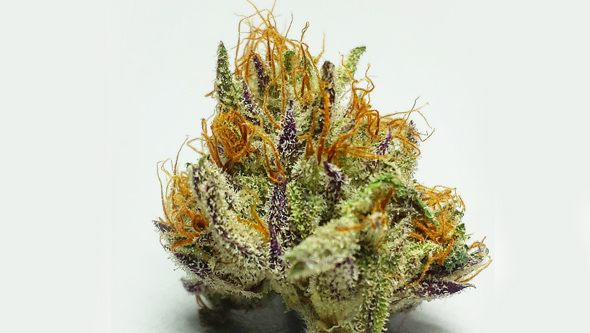
Cure: the curing process is done to improve the flavour and effect of your cannabis plants after the drying process. This is done by storing your cannabis in wooden boxes or glass jars in the dark, opening them every now and then over the process of a few weeks. Depending on the strain, this may take from one to three months. Pure sativa plants generally require more time to cure in order to produce the best effects or flavours.
D
Dab/dabbing/dab: smoking small amounts of concentrates such as BHO (Wax, Shatter, Resin etc), Rosin or Ice-o-lator in a pipe specifically designed for dabbing (BHO rigs, electric nail rigs etc.)
Damping off: this is a type of disease that can be caused by various different types of rot and fungi in saplings. The stem stretches up and turns brown, the plant ends up lilting to one size and it dies a few days later.
Drainage: this is the process in which remaining water is expelled. When growing in the ground, drainage happens naturally and it depends on the soil content. In flower-pots it depends on the substrate as well as the type of flower pot, size, and the presence of expanded clay.
Drying: the drying process begins when you harvest the plant up until it’s ready to be cured; when the branches make noise when bent. In order to keep your cannabis in the best conditions, we recommend keeping it in a dark area, with air circulation, at around 20°C without accelerating the process.
E
Edible: food items that contain cannabinoids such as THC/CBD.
Endemic: when referring to a plant, this means limited to a certain geographical area.
Endogamic depression: this is when plants present a lack of strength due to its hybridization which, if not done right, can produce a recessive gene with negative results.
Expanded clay: this is added to the bottom of the flower pot to improve drainage. Expanded clay can also be used as a base for hydroponic plants’ roots to sit in.
F
Feminized Seed: seeds that come from a cross between a female plant and a reverted male plant, of the same or different species, in order to achieve only female seeds. At la Huerta Grow Shop you can find a wide array of feminized seeds by the best seed banks.
Fertilizer: organic or inorganic substance used to give your plants nutrients. There are various types of fertilizers according to their composition, use or format. If you need nutrients for your plants, you can find every type out there in our store.
FIM: FIM stands for F*ck I Missed, and it’s a type of pruning method that consists in cutting at the node while leaving part of it still attached to produce more branches. It got this name because the grow to first do it assumed he messed up when attempting to top his plants.
Flower: reproductive structure in plants that produce seeds. If you’re growing feminized plants they’ll produce female seeds that keep growing and grow larger and produce more resin if not pollinated. Cannabis used to breed seeds produces less flowers and resin.
Flowerpot: this is where you’ll place your substrate and grow your plant. They can be found in black, which don’t reflect light and are ideal for indoor growing, and white and fabric pots which are recommended for outdoor grows. We have all types of flower pots available in our store; check them out!
Foliar spray: this can be done to apply fertilizers, additives, insecticides and fungicides to leaves without touching the substrate or soil in order to avoid contamination, reactions to other fertilizers etc.
Fungicide: this is a product or substance that’s used to fight off fungi and rot. At La Huerta Grow Shop you can find a wide range of fungicides.
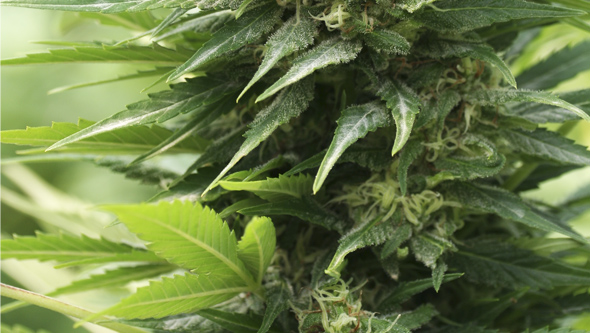
G
Genotype: this is the genetic information contained in each cannabis strain’s DNA.
Germinate: sprouting a seed successfully and growing it into a sapling.
Germination: the process in which seeds begin activating and turning into a sapling. In order to finish this process you need extra humidity, oxygen and the right temperature.
Gram per m2: this is the amount of cannabis that you can harvest indoors – measurement not used in USA and Canada. This number is the expected yield when all conditions such as watering, fertilizer, lighting, humidity and ventilation are ideal and you’re using 600w lighting. Each seed bank will give general predictions for your grow.
Gram per plant: this is the amount of grams you can harvest outdoors per plant. This indicates the maximum yield that you can obtain under the best possible conditions when growing in soil or in the ground from the start of the season, no infestations and a stress-free grow.
Ground: this is referring to the solid surface of the earth in which you can plant cannabis.
Grow shop: a store dedicated to selling products for growing cannabis. At La Huerta Grow Shop you can find everything from cannabis seeds, growing accessories and smoking paraphernalia to book on how to grow cannabis.
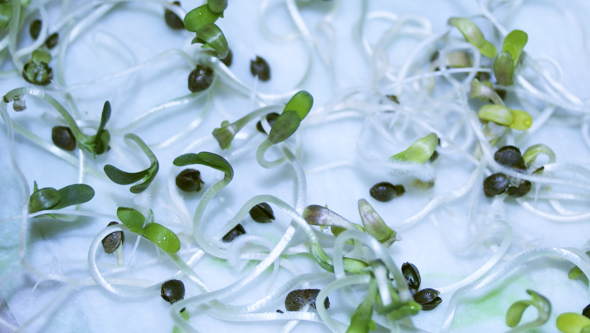
Guano: natural fertilizer created using bird, bat or marine animal excrement. Some guanos contain lots of nitrogen and others contain more phosphorus. If you’re looking for guano for your grow you can opt for one of the most used types, bat guano.
H
Hard water: tap water or other types of water with an EC (electro-conductivity) level between 0.8 and 1.2ms.
Harvest: this is when you cut your plants down in order to trim and dry, or simply dry them. There is a right time to harvest and it usually happens for a couple of days which is when your plants’ trichomes are at their best. If you’re planning on harvesting your plants soon, make sure to check out our cannabis harvest section.
Hash: this is a concentrate obtained from cannabis; there are various different types of hash classified by the method obtained and the way it’s worked to make the hash; charas, ice-o-later and others. Check out our resin extract catalogue, where you can find a wide range of materials used to create your very own hash.
Head shop: this is a store that sells all sorts of cannabis paraphernalia used to consume cannabis such as grinders, bongs and vapes; La Huerta Grow Shop is also a head shop!
Hemp: this is used to refer to industrial hemp, which is usually chosen for its yield and fibre quality regardless of the effects produced. Nowadays, industrial hemp with no psychoactive effect whatsoever can be legally grown.
Hybrid: this is a plant that comes from combining two different strains with two different genetic information. There are different types of hybrid that can be differentiated between sativa-dominant and indica-dominant, first, second and third generation (f1, f2 and f3). Two different strains produce an F1 strain, and crossing two of these descendants creates an f” strain and so on. An example of a hybrid is Black Dream.
Hydroponics: a growing technique using an inert substrate and a liquid solution with nutrients to feed plants. Hydroponic systems can be open, where the nutrients aren’t circulated, or closed, where all nutrients are put on a cycle throughout the grow. Visit our store to check out everything needed to grow hydroponic cannabis.
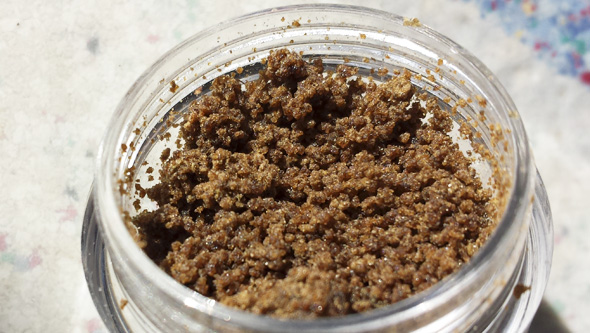
I
IBL: this is a selective breeding process based on endogamy, which means crossing plants of the same strain in order to obtain certain characteristics and stable results. This type of hybrid can cause endogamic depression in plants. Some examples of this type of cross are Skunk 1 and Northern Lights, which have been crossed over and over for years and are incredibly stable.
Ice-o-lator: Also known was water hash or bubble hash. This extraction method is done using iced water and two or more filter bags. The more filter bags you use, the more different qualities of hash you’ll be able to extract. You’ll need to dry the resulting hash so that it doesn’t rot due to extra moisture. Depending on the material used and filtered, you can make Full Melt, Fresh Frozen Ize and other types of concentrates.
Inert: when referred to substrates, this means that they contain no nutrients but can act as a holding spot for your plants’ roots, which will need to be given nutrients when watering.
Inert substrate: this type of substrate doesn’t contain insects and can’t be infested, and some can be reused. Roots grow more which can increase yield. Some examples of inert substrates are expanded clay and coco coir.
Insecticidal soap: this is obtained through a reaction between lipids or fats with potassium hydroxide. Insecticidal Soap doesn’t damage your plants and when it decomposes it actually provides nutrients. It’s an insecticide and acaricide that acts by coming into contact and dissolving insect exoskeletons.
J
Jelly: (hash) this is a type of concentrate in which a dry concentrate and cannabis oil is used (BHO, Rosin or Rick Simpson Oil).
Jiffy: compact peat ideal for using as a base or substrate for clones/cuttings. Also used for germinating seeds.
Joint: also known as blunt, spliff, and a very long etc. This is a rolled up cannabis cigarette with or without a filter.
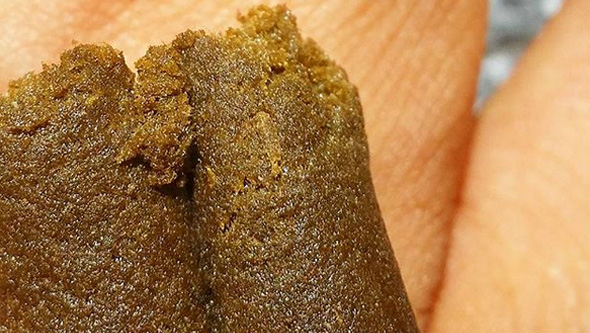
K
Kiffy: this word means various things; a local cannabis strain in Morocco, which is mixed with a type of local tobacco.
L
LEC: (ceramic metal halide) this lighting is based on old high pressure sodium lights, substituting quartz for ceramic. This change allows for a massive reduction in temperature. Highly efficient for cannabis growing.
LED: (light emitting diode) this is a type of lighting that has two terminals known as diodes that allow electricity to pass in just one direction. When the right tension is applied, the electrons recombine by generating energy in the form of photons. They don’t produce heat unlike HPS lighting. The best example of LED lighting for cannabis is Blooming LED.
Light-period: this is the amount of hours of light and dark that your cannabis plants receive.
Living substrate: these substrates potentially contain soil, hummus, peat and other components such as expanded clay, vermiculite etc. The main difference between these types of substrates is their quality and type of nutrients contained. Some examples of living substrates are Light Mix by BioBizz or Kilomix by Atami.
M
Marijuana: the term marijuana refers to psychoactive cannabis flowers and the plants that produce them. Some synonyms are cannabis, weed, mary jane, ganjah and many more.
Medible: this is a term for a medicated edible, which refers to all edibles that contain THC. There are many types of medibles (cakes, cookies, sweets, etc) in various concentrations of THC (5mg, 10mg, 20mg, 100mg, 500mg).
Mineral fertilizer: fertilizers of mineral origin that contain artificial contents. Mineral fertilizers are easily absorbed by plants, allowing for amazing results. However, you’ll need to be careful when using it so that you don’t over-fertilize your plants.
Multipurpose base fertilizer: this fertilizer is designed to cover your plants’ needs throughout their entire growing process. A good example of this type of full-cycle fertilizer is Bionova Soil Supermix.
Narcotic effect: this is the effect produced by most indica strains, acting as a muscle relaxant, causing tiredness and possibly couch-locking you for a while. An example of a narcotic strain is OG Kush.
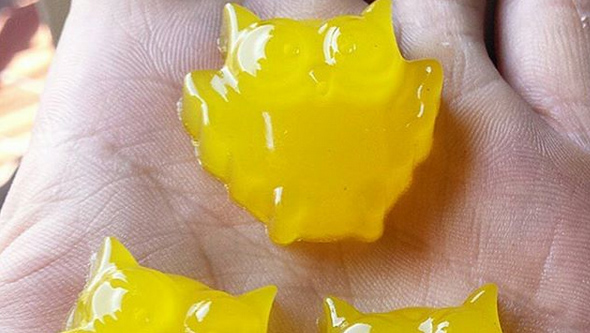
Neem: an extra obtained from Neem trees that’s used as an efficient insect and pathogen repellent when growing cannabis organically. Use Neem extract to organically and effectively protect your plants.
O
Organic fertilizer: fertilizer of organic origin also known as bio fertilizers. These types of products maintain and improve flavour and aroma better than others. A good example of an organic fertilizer is Plagron Mega Worm. (worm humus)
Organoleptic qualities: these are cannabis characteristics that can be perceived with the senses; aroma, flavour, appearance…
P
Petiole: this is the part that attaches the leaf to the branch.
pH: unit of measurement that determines the acidity of a given solution. Works on a scale from 1 to 10. There are electronic meters and meters that use reactive liquids, as well as products used to decrease or increase the pH of a given solution (in this case, your nutrient solution).
Phenotype: this is a variation of genotype that your plants may produce depending on the medium’s influence. Cannabis strains have one common genotype with one or various phenotypes, which can determine certain characteristics such as the capacity to turn their flowers purple.
Photoperiodic cannabis: cannabis plants that grow and flower depending on the amount of light received. The ideal set up is 18 hours of light during the growth period and 12 hours of light during the flowering period. Our grow shop stocks many photoperiodic seeds in both feminized and regular formats.
Potable water: this is treated water that is safe to drink. One of the many treatments used on this type of water is chlorine which doesn’t affect the human body in small quantities although I can affect your plants. This is why you should let your tap water sit for a while in order to lower the chlorine; you can also use a reverse osmosis system in order to completely clean it. At La Huerta Grow Shop you can find a wide range of high quality osmosis systems.
PPM: this stands for parts per million and it measures the concentration of salts or minerals. It’s generally used to measure the amount of nutrients in a solution or to measure possible residues in cannabis concentrates.
Predator: in cannabis growing this refers to insects used to get rid of typical infestations that can infect cannabis plants.
Prune: a technique that consists in getting rid of certain branches in order to improve cannabis growth.
Pure water: obtained in a lab with an EC level of 0 mS.
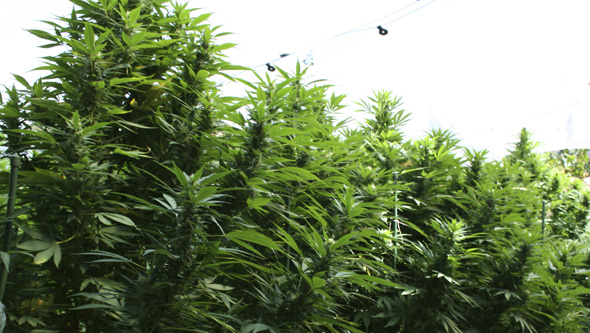
Pyrethrin: organic compound extracted organically from chrysanthemums. Highly effective against certain types of cannabis infestations with a short safety period. A good example of this is the highly effective Spruzit.
Pyrethroid: an artificial insecticide designed to imitate pyrethrin. Due to its synthetic origins, it’s much more efficient although it takes longer to degrade in your plant however it’s only recommended for use during the growth period. If you’re looking for a synthetic pyrethrin-based product you should check out Klartan 10.
R
Regular seed: regular seeds come from crossing a male plant and a female plant without intervening. A regular cannabis seed can produce either a male or female plant. We have a wide range of regular seeds.
Rick Simpson Oil: cannabis concentrate usually extracted using ethanol and decarbed so that it can be consumed. This concentrate tends to be used for medicinal purposes.
Root: this is when your plants create new roots. You can use stimulants such as Rootfast which is used to promote fast rooting.
Root mass: also known as root system. This is the entire central rooting system, small roots and root hairs that grow from your plant. If you want to increase your plants’ root mass, make sure to check out our rooting section.
Root stimulant: this is an additive that’s generally used during the first few weeks of life in clones/seeds and after every transplant to promote new root growth and reduce stress. An example of root stimulant is Rhizotonic.
Ruderalis: this is a subspecies of cannabis sativa that has its origins in the Volga plains. This plant flowers regardless of the amount of light received, once it produces its 5th or 7th pair of leaves. This plant is very slightly psychoactive and has been crossed with potent cannabis strains in order to create autoflowering plants.
S
Sapling: this is the plant right after germination and before it produces its first pair of real leaves. First you’ll see the cotyledons, which are similar to leaves but thicker and rounder. Next, the real leaves will begin to grow.
SCROG: (Screen of Green) this is a growing technique that involves a wire mesh placed over plants through which their branches are threaded in order to achieve even lighting over all plants. This started as a way of adapting to fluorescent lighting, although nowadays it’s used to increase yield and branches on plants. In our store you can find many different types of SOG and stakes for training plants.
Seed: part of a fruit or tree that’s usually small and around that contains a plant in its latent state.
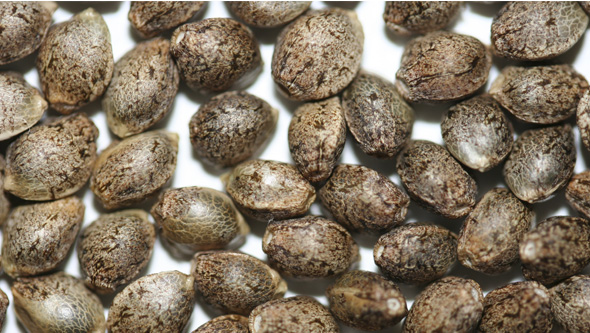
Set & Setting: this is a concept derived from psychedelic experiences from the 60; the “set” is the mood of the consumer, and the “setting” is the environment surrounding the consumer. The set and setting are vital for a good experience.
Shatter: this is a type of cannabis BHO concentrate that is treated to obtain a glass-like structure and a high cannabinoid content.
Sinsemilla: this is a type of cannabis grown by separating the males from the females in order to produce much larger cannabis flowers without any seeds and much more resin, aroma and flavour. This type of cannabis is also obtained by growing feminized plants.
Soft water: this water can be obtained from osmosis systems, and it has an EC of 0.1 – 0.01, so you’ll need to modify it with calcium and magnesium in order to increase it to 0.4 – 0.5 mS.
SoG: also known as Sea of Green; this growing technique involves placing more clones or seeds than normal, taking up all available space and making the most of the light. The objective is to harvest faster, as you’ll be flipping to flower much earlier.; your plants should grow small with one large bud, resulting in larger yields. The plants should be the same strains or clones in order to have the same flowering times and more or less same size. You can use trellis nets to make the absolute most of your available space. Our store stocks various different SoG nets and accessories.
Soil pathogens: these are organisms present in soil and substrates that can make cannabis plants sick, including virus, bacteria, fungi, insects etc.
Soluble: the capacity of any given material to dissolve in liquid.
Solution: mixture of water and nutrients – the result of dissolving any colloid in a liquid.
Stimulating effect: this is the effect or sensation that most sativa plants produce; active and energetic.
Stress: all external stimuli that can negatively affect plant growth, such as heat stress, drought-stress, transplant stress and excess water stress, among others.
Substrate: medium in which cannabis (and other) plants’ roots can anchor and grow. There are many types of substrates, depending on the type of grow you plan on doing.
Sulphur: yellow chemical that lets off a peculiar odour (S). It’s also an efficient fungicide and acaricide. You’ll need to be careful though; at temperatures over 33 °C it can be toxic for cannabis plants The best sulphur for this purpose is Elosal sulphur.
Super cropping: this is a growing technique used to increase the yield of certain cannabis strains, which involves pressing in using your thumb and index finger at about 10/13cm from the top of the main stem while bending downwards until it’s at a 90° angle or more. The idea here is to spread auxins out without cutting the main stem completely.
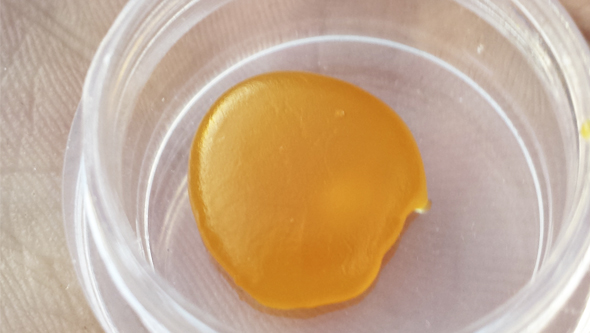
Supercritical Co2: this is an extraction technique based on using solvents in a halfway state between gas and liquid, which is when they’re best at dissolving concentrates and separating them. Supercritical Co2 is an innocuous solvent.
T
Terpenes: these are what dictate your cannabis plants’ aroma and flavour, and are also present in other plants such as lavender. Exact proportions of terpenes make up your plants’ aroma and flavor. At La Huerta Grow Shop you can find a wide range of terpenes that are ideal for providing intense aromas and flavours, being used for herbal extracts, oils, vape liquids, edibles and drinks!
THC: (tetro-hydro-cannabinol) this is a metabolite present in cannabis flower resin that’s been cured, and it’s in charge of the psychoactive effect produced by cannabis. It also has plenty of medicinal properties.
Topping: this is a pruning technique that requires cutting the top off of your plants (the apex), at about 15cm from the top. This is done so that auxins (plant hormones that stimulate main stem growth versus other branches) are distributed around the plant to grow larger secondary branches that produce larger yields.
Translaminar insecticide: insecticide that’s capable of penetrating insect skin and shells where it continues to act. Unlike systemic insecticides, this type only acts where it is sprayed. If the plant grows, it won’t protect any new growth. An example of translaminar insecticide is abamectine such as Bermectine, highly efficient against mite infestation.
Transplant: this is the act of switching your plant to a larger flowerpot. As your plant grows, its roots begin to take over the flowerpot that it’s in, We recommend transplanting as your plants grow, leaving it be during the flowering period. We stock various substrates and flowerpots ideal for any transplanting needs, as well as root stimulators for proper growth after transplanting.
Trichomes: resin glands on cannabis plants. There are different types of trichomes. You’ll need to choose the perfect time for harvesting based on the colour/state of your trichomes. Trichomes contain cannabinoids such as THC and CBD as well as part of the plants’ total terpenes.
U
Unusable water: contaminated water with EC levels over 1.2mS
V
Vaporize: a way of consuming cannabis using a vaporizer, a device that heats up your cannabis enough to vaporize its cannabinoids, allowing for healthy consumption. Depending on the applied temperature, different cannabinoids are vaped which can be seen in the final effect. At La Huerta Grow Shop we have a wide range of vaporizers and vape accessories.
Vaporizing temperatures: cannabinoids and terpenes are vaporized at different temperatures. Vaporizers that allow you to control the temperature allow you to choose the cannabinoids you’d prefer to vape to modify the effect obtained. Our store has a wide range of tabletop and portable vaporizers on offer, allowing you to enjoy your cannabinoids anywhere you are.
Veg lighting: when growing photoperiodic cannabis indoors you’ll need to give them 18h light and 6h dark for the best results.
W
Water: inorganic chemical compound made up of two H molecules (hydrogen) and one oxygen molecule; H2O.
Watering: act of adding water with or without nutrients to your plants’ substrate. Their roots need humidity, oxygen and nutrients to grow, all of which are given when watering. Both the lack and excess of water can cause stress in cannabis plants.
Wax: BHO-type cannabis concentrate in which some of the waxes that contain terpenes remain; this concentrate has a high amount of cannabinoids as well as terpenes.
